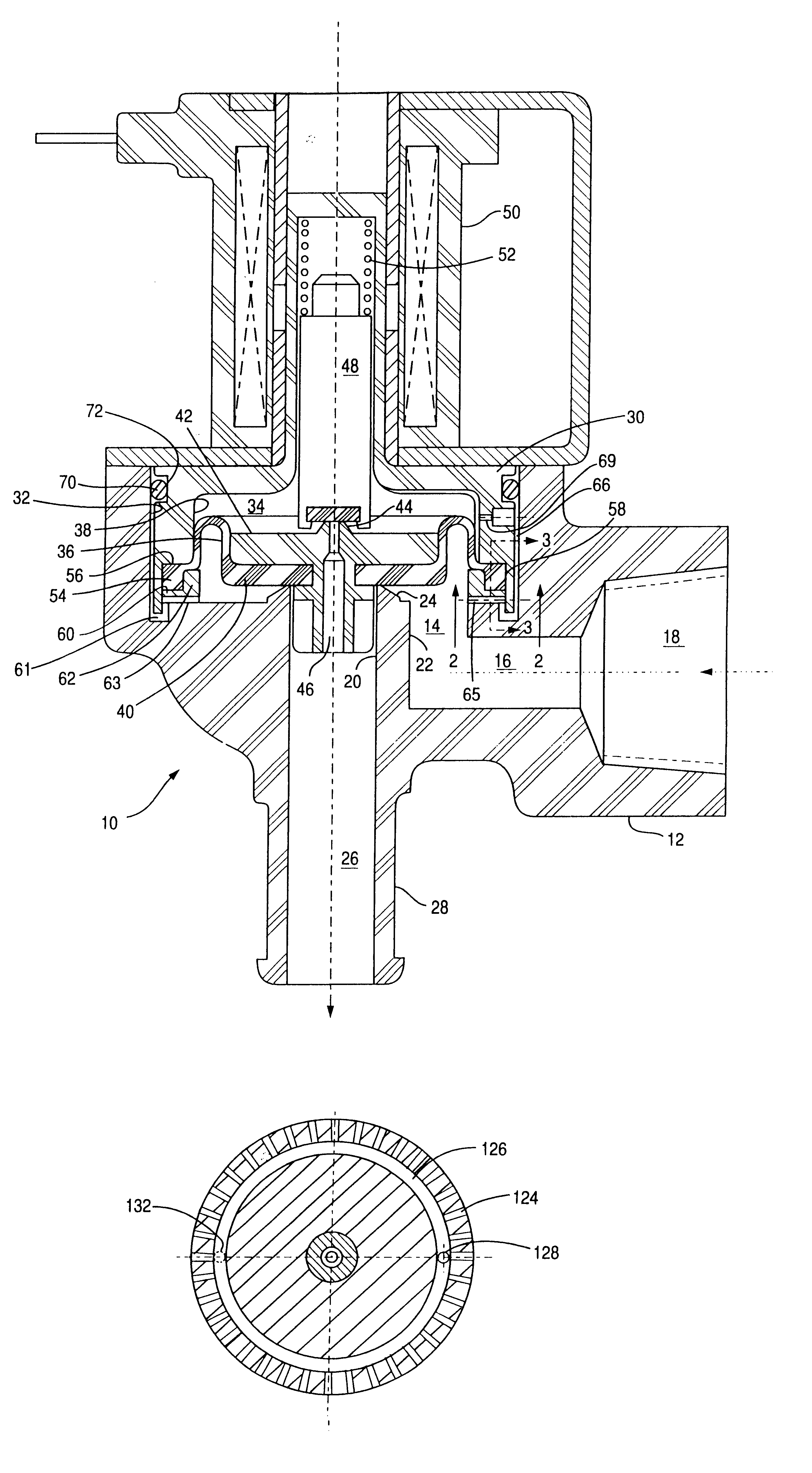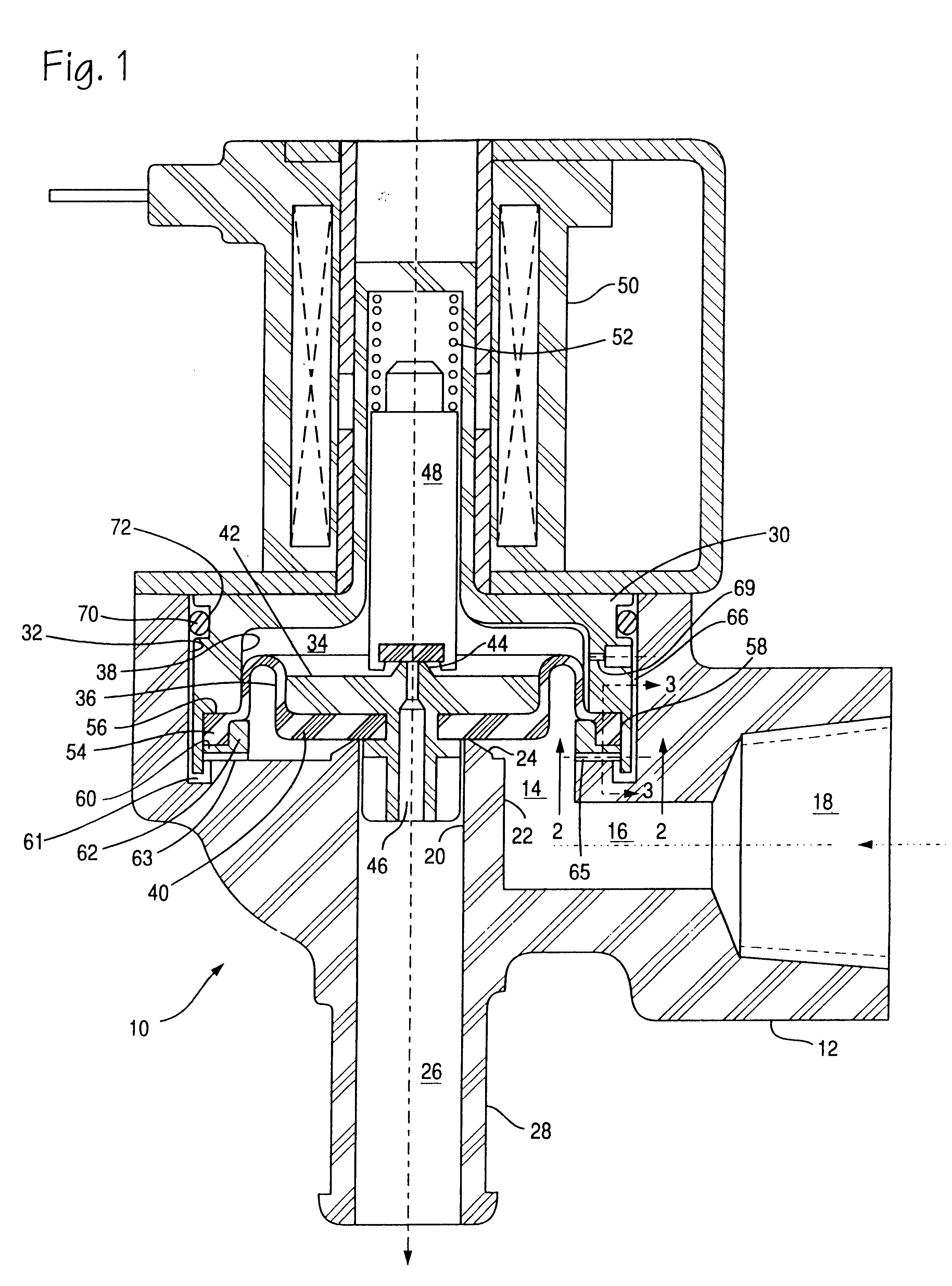Foreign particle resistant valve
a technology of foreign particle and valve body, applied in the direction of valve details, valve arrangement, valve operating means/release devices, etc., can solve the problems of inability to open or close the main valve position, the most susceptible to foreign particle blockage, and the failure to facilitate the fabrication and service cleaning of the main valve, and achieve precise dimensional tolerance control.
- Summary
- Abstract
- Description
- Claims
- Application Information
AI Technical Summary
Benefits of technology
Problems solved by technology
Method used
Image
Examples
Embodiment Construction
Reference to FIG. 1, the valve assembly of the present invention is indicated generally indicated at 10 and has a housing 12 of a plastic or metal material, and a main valve chamber 14 which communicates with passage 16 and inlet 18. An outlet bore 20 is formed in a boss 22 extending into chamber 14 and terminates in valve seat 24. Outlet bore 20 communicates with outlet passage 26 to permit fluid flow to outlet 28 when valve 10 is operated to open.
A cover 30 having a bore 38 is received within bore 32 of the housing 12 and forms a pilot chamber 34 with flexible diaphragm 36 and bore 38. Pilot chamber 34 is separated from chamber 14 by flexible diaphragm 36, which has a main valve member 40 for movably contacting valve seat 24. Valve member 40, comprising the central portion of flexible diaphragm 36 has received therethrough an insert 42 which extends into bore 20 for sliding engagement with the wall thereof to thus act as a guide for movement of valve member 40. The pilot chamber s...
PUM
 Login to View More
Login to View More Abstract
Description
Claims
Application Information
 Login to View More
Login to View More - R&D
- Intellectual Property
- Life Sciences
- Materials
- Tech Scout
- Unparalleled Data Quality
- Higher Quality Content
- 60% Fewer Hallucinations
Browse by: Latest US Patents, China's latest patents, Technical Efficacy Thesaurus, Application Domain, Technology Topic, Popular Technical Reports.
© 2025 PatSnap. All rights reserved.Legal|Privacy policy|Modern Slavery Act Transparency Statement|Sitemap|About US| Contact US: help@patsnap.com



